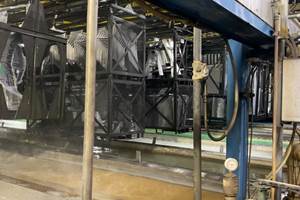Buffing and Polishing— Looking to the Future
Advances in equipment, automation and consumables can help you compete.
We all know that finishing operations—especially when it comes to buffing and polishing—can be a very expensive part of manufacturing. In fact, it is perhaps the most costly operation, depending on the item being produced. While there may be alternative methods of finishing, buffing and polishing are two processes that are tough to duplicate with other methods.
Some operations have chosen to “outsource” or send their finishing operations off shore. Of those, some have achieved success, while others have learned the hard way and brought their finishing back in house. There are those, too, that have looked to the future and continuously improved their processes in their own operations, and those are the ones who are excelling in their industries.
Are you still performing your finishing operations the way you were 10 or even 5 years ago? Sure, it takes time to develop a process. But if you are not continuously improving, refining and re-developing, you’re going to be passed by someone who is. Here’s an example:
The economy—along with everything else—goes in cycles. Many companies in the last several years have seen some tough times and have had to adapt. Some have chosen a “lean” approach. Others have found “new” niches or business segments that in the “boom” years they never would have imagined participating in. Some have out-sourced or sent certain operations offshore.
In any case, sometimes slow periods can actually be a good thing, giving a company time to re-evaluate or examine the way in which it operates its production methods. Those that are in it for the long haul simply cannot continue to do so competitively with equipment several decades old. Thus we examine various components of a grinding, polishing, or buffing operation:
Equipment
It seems as though we are all in a “just in time” world these days. We don’t often receive orders for thousands of items at a time. Thus, flexibility and changeover are of paramount importance. For these types of applications, robotic cells offer many advantages.
Robots can be configured with combinations of belt polishing as well as buffing stands. Installed with magazines, they can run unattended for entire shifts. Equipped with lengthy belts and large diameter buffing wheels, changeovers due to consumable wear are minimal. Electronically controlled sensing systems that measure wear of consumables lead to greater accuracy as well as easier programming for operators.
Manufacturers have now begun to equip the robot with multiple workholding fixtures, leading to a more productive robotic cell. In the past, a robot would typically process one piece at a time. Now a single robot can process multiple pieces in one clamping operation, thus leading to a “happy medium” when compared with more-productive rotary or in-line systems.
The key to a successful robot polishing or buffing system is in the integration of the robot itself to the polishing units. These units must have compliance. Simply placing a robot in front of a polishing stand will yield disappointing results.
Hybrid Robotic/Rotary System. This type of equipment couples the potential high productivity of a rotary table concept with the flexibility of multi-axis heads placed around the rotary table. These can be configured from one- to 12-station systems.
Both flexibility and productivity are offered via three- to four-axis programmable heads coupled with an indexing rotary table. Options include automatic tool (buff) change, on-the-fly part/program change and a host of other possibilities.
A good example of this type of system in use would be by a wheel, cookware or lighting manufacturer. In the past, these items were typically processed on rotary tables, which were comprised of many stations. While highly productive when running, downtime due to changeovers is extremely high. A robotic cell offers extremely high flexibility but is simply not as productive as a rotary system. This is where a hybrid robotic/indexing table can pay huge dividends.
The previously mentioned systems are examples of the many types of systems currently available, and may or may not fit your method of manufacturing. The point is not to recommend any one type of system, but rather to encourage you to explore the possibilities available—after all, your competitors are.
I have personally found my share of customers who are bringing more and more production back to North America realizing that the logistics, long lead times and inconsistent qualities coming from abroad are having an impact on customers’ bottom lines. Thus, my earlier point about keeping an open mind and still making it a priority to “remember” how to manufacture here in the U.S. Those who choose to look and invest in the future are the ones who will realize a quicker return to profitability once the cycle turns.
It’s not too late to participate in the recovery, but you must look to the future, explore new ways of manufacturing—specifically buffing and polishing—and be ready to adapt to the changing customer demands.
In the cookware and sink fields, we have customers who can now change over from a traditional “abrasive ground finish” to a newer “euro-style” finish in a matter of minutes, not days and weeks as in the past. This is done using the same machine, simply by changing media and programming.
Consumables/Application Systems
Companies have worked months, even years, developing processes that work for them. It’s easy to get comfortable with your process—it works, doesn’t it? But if that theory were followed by everyone, we wouldn’t have new buff technology, non-woven products, coated abrasives, etc. Set aside some time each month to try a new consumable. You might be surprised what you find. Your vendors are continuously developing new products, and if you don’t take advantage of them, someone else will.
Often an overlooked component of a finishing operation, application systems are of paramount importance. This is looked at by many as a small part of the equation, but in reality is perhaps the most critical for a couple of reasons.
First, you may have the greatest piece of equipment in the world, outfitted with the best buffing wheel/compound money can buy. But if you can’t apply the compound to the buff in the proper way, it doesn’t matter.
Second, if you’re not using some type of automated application system, you’re wasting valuable time. In a manual polishing operation, this is especially true. For instance, if your operators are buffing parts with a cycle time of 15 seconds, this leads to an hourly production rate of about
50 parts/hour (at 80 percent efficiency). However, they must apply compound by hand after every four or five pieces. This cuts dramatically into that rate of 50 parts/hour. Imagine the productivity gained by equipping that manual buffing jack with an automatic compound-distribution system, which are available for liquid or solid compound.
As far as spray systems are concerned, there are two basic types: low-pressure and high-pressure. Depending on the application, one or the other will work best.
For operations that use relatively low surface speeds of the buffing wheel, a low-pressure system will lend itself just fine. These types of spray guns are essentially “solenoids” that spray a large volume of compound when opened. The length of the spray cycle will determine the amount of compound distributed. The advantages of these types of guns are the low initial investment as well as ease of maintenance and relatively low spare-parts costs. The disadvantage, however, is the large amount of compound usage/overspray, as well as the overall inefficiency of the application of compound where it needs to be.
The high-pressure systems offer spray pressures of 2,000 psi and beyond. The Widoberg/Widospray types generate high pressure within the gun, using normal shop compressed air. In addition, the exact volume of compound can be metered with each spray cycle. The major advantage of this type of spray system is that it can penetrate the wind barrier created by the buffing wheel, meaning more compound will delivered to the buffing wheel. Savings of 50 percent or more in compound consumption can be achieved. The disadvantage of this type of system is the high initial investment cost as well as high maintenance costs.
Regardless of the type of liquid compound system used—be it fed via drums, pressure pots, or large “vat” style systems—one must pay special attention to the actual plumbing and manifold systems. In theory, only minimal piping diameter is required (1/2–1 inch). In reality, and in a practical sense, larger is better. The key is getting enough volume to your spray apparatus. Thus, a 2–3-inch plumbing/manifold diameter will allow proper volume to get to your spray guns. This is especially true when feeding multiple machines from one compound source, where typically the last machine or last gun in the line tends to be “starved” for compound. Such a simple change can yield fantastic results and reduce downtime due to improper or lack of compound application.
Whether you operate a fully automated polishing operation or a small job shop, there is always room for improvement. There are many choices of equipment and methods available in the market today, and the point here is to open your eyes to the new possibilities that you may have been missing. We must invest in the future if we expect to be able to compete in the new global economy.
Related Content
How to Maximize Nickel Plating Performance
The advantages of boric acid-free nickel plating include allowing manufacturers who utilize nickel plating to keep up the ever-changing regulatory policies and support sustainability efforts.
Read MoreInstalling an Ecoat Line
Thinking of investing in electrocoating capabilities? George Lovell, coatings plant manager for Lippert, discusses considerations you should keep in mind as you add your ecoat line.
Read MoreConveyors and Paint Systems
Choosing the right conveyor system, coating technology, and ancillary equipment.
Read MoreHow to Address Declining Powder Coating Coverage Over Time
Fine particles from reclaim could be to blame for powder coating problems that emerge over time. Avoid problems by keeping hooks clean, maintaining guns and using reclaim powder quickly to avoid accumulation of fines.
Read MoreRead Next
Specifying Buffing Compound
Buffing is still regarded by many in the industry as being something of an art form. In today’s competitive industry, where customers demand precision and reproducible results, that mindset is a dangerous one. The shift of buffing—in our collective consciousness—from art to science might be facilitated by a better comprehension of buffing compound.
Read MoreDelivering Increased Benefits to Greenhouse Films
Baystar's Borstar technology is helping customers deliver better, more reliable production methods to greenhouse agriculture.
Read MoreEducation Bringing Cleaning to Machining
Debuting new speakers and cleaning technology content during this half-day workshop co-located with IMTS 2024.
Read More

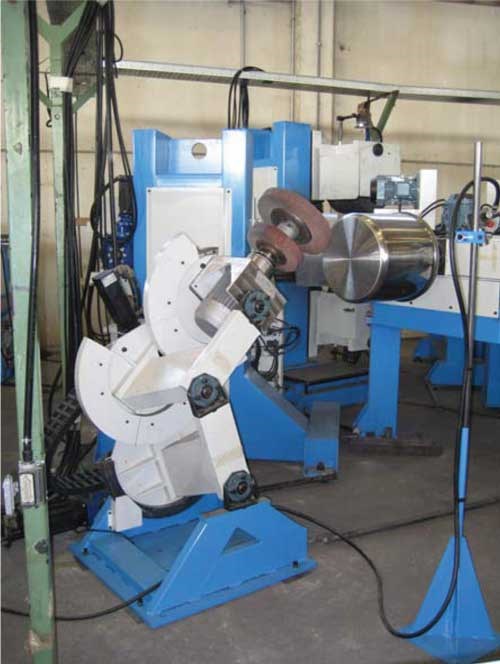
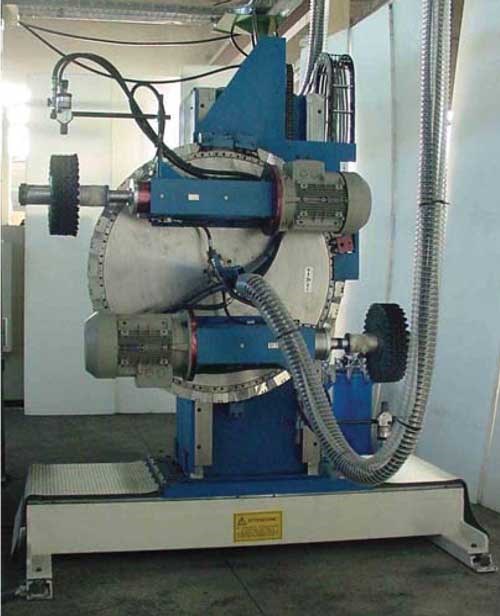
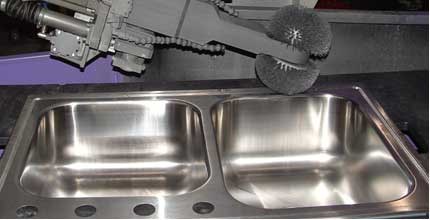
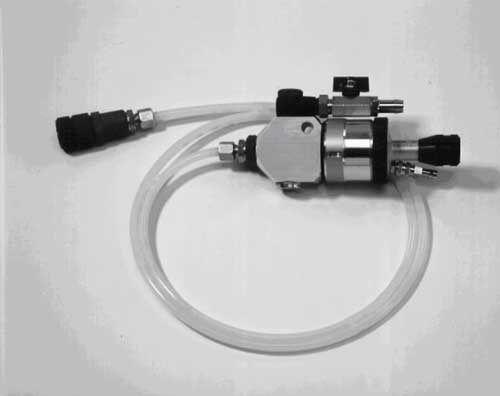










.jpg;maxWidth=300;quality=90)





